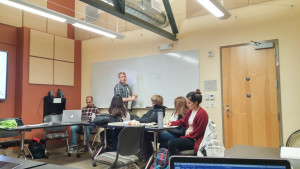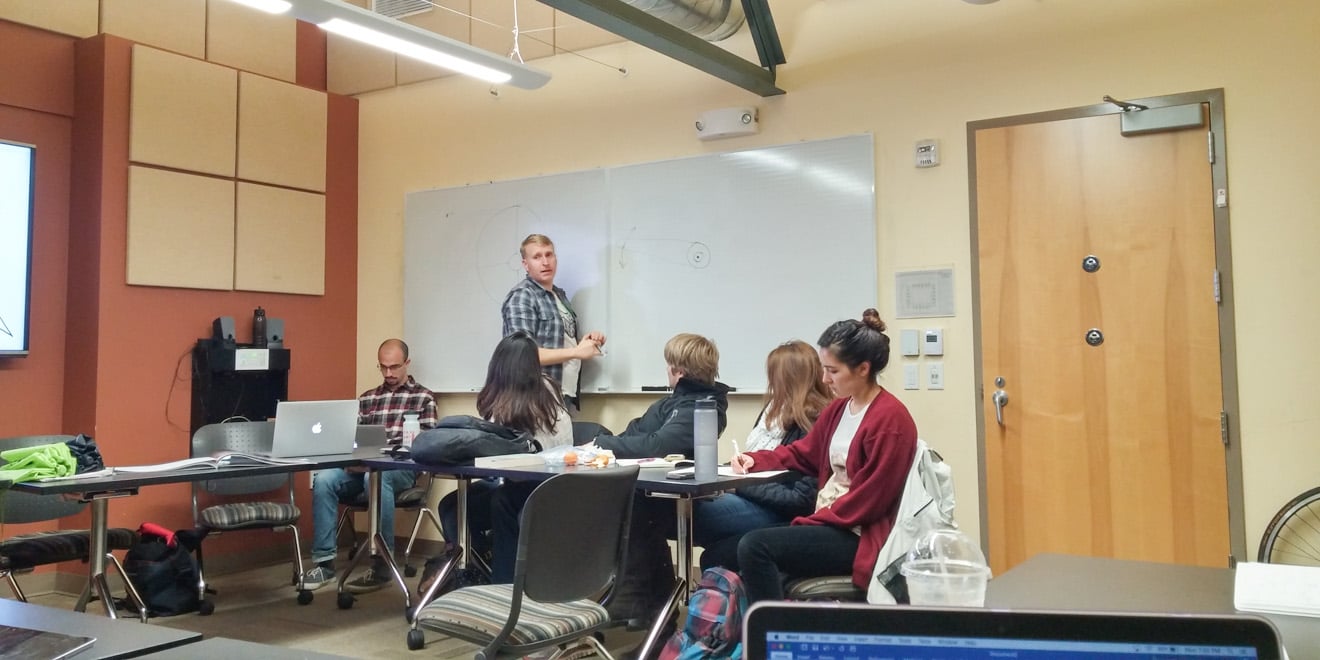
In Mechanical Engineering 204A: “Bicycle Design and Frame-Building” (ME 204A), students use engineering skills to create build their own personalized bikes.
Mechanical engineering lecturers Robert Meyer ’06 M.S. ’08, Alex Forman M.S. ’07 Ph.D. ’13 and Wyles Vance M.S. ’14 co-teach the one-unit class, which is open to undergraduate and graduate students from all majors.
The class is taught in conjunction with ME 204B, which is offered in spring quarter. Over the two quarters, students learn the ins and outs of bike-building and then put their skills to the test by designing and constructing their own bikes. ME 204A emphasizes the theoretical aspects of bicycle dynamics, giving students the tools they need to create high-quality bike frame designs, while ME 204B is dedicated to the actual bike assembly.
“It’s one of the capstone manufacturing courses we offer,” Forman said. “It takes skills the students have learned from other design courses and forces the students to get really good.”
Entry into the class is selective, as the instructors want to ensure their students are equipped to handle the course’s challenges.
“We actually held interviews for the class,” Meyer said. “There was considerable interest in the course, so we had to gauge everybody’s experience and enthusiasm for the class.”
The students that make the cut exhibit a diverse set of interests, with majors ranging from mechanical engineering to product design to computer science. What unites them is a shared passion for building and creativity, according to Meyer.
“It’s such an individual project, because you’re building a custom bicycle for yourself, but it’s also a big team effort,” Meyer said. “You’re all working together on the same tools and bouncing ideas off of each other.”
During weekly lectures, the class explores the theory behind bike building — from the historical evolution of the bike to the underlying physical concepts that make bikes work. Students learn how minute criteria, from the angle of the bike’s head tube to the arrangement of spokes on its wheels, can significantly impact the bike’s handling, speed and ability to withstand loads. Students then channel this knowledge into their own bike designs.
Most of the students’ time, however, is spent in the Product Realization Lab (PRL), where they practice key skills, familiarize themselves with the equipment and work on their projects. Activities include using special kinds of welders to match different materials, using mills to cut bike joints and brazing small parts onto steel.
For some students, these skills can be challenging to learn at first.
“Welding, especially, is something that people go to trade school to study exclusively,” said mechanical engineering student Jeff Kastenbaum ’17. “We’re being asked to make high-quality welds in two quarters.”
However, according to mechanical engineering student Matt Appleby ’17, working with peers in the PRL offers the most opportunities to learn and improve.
“These students are the top builders at Stanford,” Appleby said. “There’s even more to learn from the people in the class than in any other building class. Everyone in the class is super talented at manufacturing and designing.”
ME 204A also offers an immersive experience into the world of professional bike building. The class hosts guest lecturers from the aerospace industry who have applied their engineering knowledge to bike design. Students are also invited to tour the research and development laboratories at Specialized, one of the largest American bike manufacturing companies.
While the class culminates in a final exam, it’s not a traditional test: Students and instructors test their completed products.
“There’s pressure, if not necessarily panic leading up to it, but the final itself is a celebration of the entire class,” Forman said. “You’re showing off what you’ve spent two quarters building.”
Contact Namita Nabar at nnabar ‘at’ stanford.edu.
